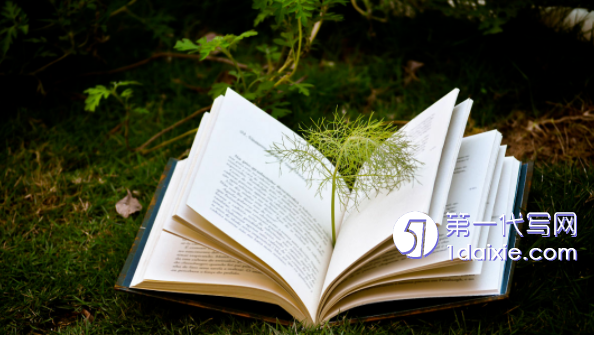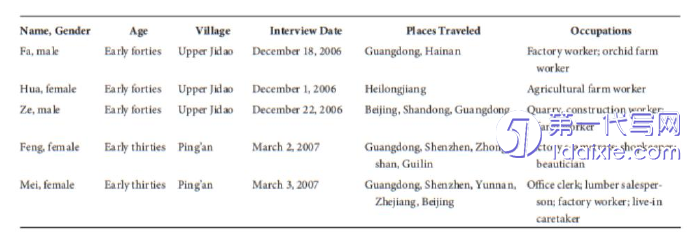本文是一篇英语论文,本报告以美国著名翻译理论家尤金·奈达(Eugene·A·Nida)的功能对等理论为指导,基于功能对等理论及其四个标准,即“达意”、“传神”、“措辞通顺自然”及“读者反映相似”,从此次翻译实践中选取19个典型案例,分析词汇、句法及语篇层面的翻译。
Part I Introduction
1.1 Materials of Translation
The source text is excerpted from A Landscape of Travel:The Work of Tourism inRural Ethnic China,which was written by Jenny Chio,an associate professor of East AsianLanguages and Cultures and Anthropology in University of Southern California.As ananthropologist,Jenny Chio has written and published many books and articles on tourismanthropology in China.
A Landscape of Travel:The Work of Tourism in Rural Ethnic China was published bythe University of Washington Press in 2014.It is the first book that applies both texts andpictures to document the tremendous impact of the development of tourism on productionand livelihoods,the rural environment,and changes in society and culture in a village ofZhuang ethnic group in Guangxi Zhuang Autonomous Region and a village of Miaoethnic group in Guizhou province since the reform and opening up(Yang,2021).
A Landscape of Travel,carrying out a case study in Ping’an and Upper Jidao(twoethnic minority villages),illuminates the changes in the two villages,the challenges andpossibilities the villagers facing when developing tourism,and the perspectives of thevillagers to tourism and migration(working as migrant workers).The book consists of fivechapters:(1)Similar,with Minor Differences;(2)Peasant Family Happiness;(3)Leave theFields without Leaving the Countryside;(4)“Take a Picture with Us”;(5)The Ability toBe Different.

1.2 Objectives and Significance of Translation
Since the source text is informative,the purpose of this translation project is toprovide translations that convey information faithfully and logically.Some colloquialconversations and interviews are involved in the source text,so this translation projectaims to choose appropriate translation methods according to different styles of languageguided by the functional equivalence theory.Meanwhile,it is hoped that this translationproject might be helpful for the readers to learn more about the tourism in these two ethnicminority villages and contribute to the development of tourism in rural ethnic China.
The translation of A Landscape of Travel:The Work of Tourism in Rural Ethnic Chinais of great importance.Firstly,the source text is valuable for the study of rural ethnictourism from an anthropological perspective.This book showcases the history and currentsituation of tourism development in Ping’an and Upper Jidao and analyzes the influence oftourism on the two ethnic minority villages.Through fieldwork,including participantobservation,semistructured interviews,etc.the author of the source text spent twoconsecutive years conducting a comparative case study in two ethnic minority villages andvisited these villages almost once a year from 2007 to 2012 to complement the research.Thus,the book is of reference value and reliability.Secondly,this book,written by aforeign anthropologist,provides the research from a different perspective and supplementsthe research on tourism in ethnic minority villages in China.It presents the motivation ofurban tourists to travel to ethnic minority villages and the relationship between theprotection of traditional culture and tourism development,which can be used as a referencefor Chinese anthropologists.Thirdly,in the source text,community hosts rather thantourists are regarded as the subject of tourism activities,which is different from previousstudies.In addition to enriching the research of tourism in rural China,it is the enrichmentof anthropological theory.
Part II Translation Process
2.1 Pre-translation Preparation
To make good preparations for this translation project,three phases proceeded inpre-translation work.
Firstly,reading the source text thoroughly.For a better understanding of the contentand the language characteristics of the source text,the report author read the source textrepeatedly.Attention has been paid to place names,words about tourism anthropology,andtextual logic.It was found that there are many prepositions,passive sentences,as well aslong and complex sentences in the source text.
Secondly,reading parallel texts extensively.Parallel texts refer to the referencematerials of the target language that are related to the original content and provide similarfunctions(Li,2009).To learn about tourism anthropology and field investigation,thereport author read many parallel texts.Among them,Anthropology of Tourism(Peng,2004)helps the report author construct the background knowledge of tourism anthropology.Thereport author also learned about the development of ethnic minority villages based on theclassic case analysis of Yangshuo in Anthropology of Tourism:Theory and Experience(Sun,2013).Dansha Ancient Village:Ethnographic Study of Longtan Gelao Village,Wuchuan,Guizhou(Li,2019),which presents the interviews with tourists and villages,conduces to the translation of interviews in the source text.
Thirdly,studying the functional equivalence theory.According to the features of thesource text,the functional equivalence theory is adopted to guide this translation project.Therefore,for better understanding and applying the theory,the report author downloadedand read some books and papers about the theory.
2.2 While-translation Work
This stage is the core of the translation process.It can be divided into three steps:
Firstly,translating the source text systematically.This translation took four months,with about 500 words translated per day.When all the texts were translated,two rounds ofrevisions were made.Through revisions,many mistakes were corrected in the initial translation,including errors in understanding and spelling.Besides,some rigid translationswere polished.
Secondly,consulting dictionaries and websites.The source text is an ethnography,which involves professional expressions and relevant background,so the choice of wordsin comprehension or expression needs careful consideration.The report author looked uppolysemy,place names and proper nouns in dictionaries and looked through variouswebsites to check the relevant background.
Thirdly,selecting difficult words and sentences at the lexical,syntactic and textuallevels meticulously.After translating the source text(37 paragraphs in total),the reportauthor selected and analyzed some key and difficult words and sentences which are theprerequisite for composing the subsequent translation report.
Part Ⅲ Theoretical Framework ................................. 7
3.1 Introduction to the Functional Equivalence Theory .......................... 7
3.2 The Core Concept and Four Standards of the Functional Equivalence Theory ........ 7
Part Ⅳ Case Study ....................................... 10
4.1 Translation at the Lexical Level .................................... 10
4.1.1 Translation of Chinese Four-character Phrases .......................... 10
4.1.2 Translation of Prepositions................................... 12
Part Ⅴ Conclusion ................................. 22
5.1 Gains ........................................ 22
5.2 Limitations ............................ 22
Part IV Case Study
4.1 Translation at the Lexical Level

As the smallest unit of language,word plays a crucial role in both the sourcelanguage and the target language.The meaning of a sentence or a text is carried by words.Thus,the selection of words should be meticulous to express the closest meaning of thesource language.This section presents the choice of Chinese four-character phrases andthe translation of prepositions.
4.1.1 Translation of Chinese Four-character Phrases
Translators should try their utmost to help the target-language readers have a similarresponse to the source-language readers according to the functional equivalence theory.So,translators can make adjustments in accordance with the writing habits of the targetlanguage.Besides,translators should not be restricted by the form of the original words.Therefore,the source text can be translated into expressions that conform to Chineseconventions,such as the four-character phrases.The usage of Chinese four-characterphrases,which are concise,comprehensive,vivid and symmetrical,is a unique languagephenomenon in the Chinese language.There are four-character idioms,and non-fixedfour-character structures(Mao,2005).Therefore,the proper use of Chinesefour-character phrases can make the translation more readable.
Case 1
ST 1:The reason was simple:he had a wife,children,and parents to take care of,and there was little money to be earned by serving in the village leadership.(P32-33)
ST 1:其中的原因很简单,法需要照料妻小、赡养父母,而当村干部收入微薄。(P32-33)
Analysis:If the literal translation was adopted in“had a wife,children,and parentsto take care of”,it would be“他有妻子、孩子和父母要照顾”,which is rigid.Thus,according to the Chinese expression habits,the report author processed this part as“照料妻小、赡养父母”,which is more symmetrical and concise.Meanwhile,“little money tobe earned”is not translated literally as“没有什么钱可以赚”but translated as“收入微薄”.The reason is that“收入微薄”shows the same meaning as“没有什么钱可以赚”and is not redundant.In a word,the proper use of four-character words cannot merely befaithful but can convey the spirit of the source text.
Part V Conclusion
5.1 Gains
The translation process is the process of a fruitful harvest.The following are thevaluable experiences gained during this translation project.
Firstly,adequate preparations should be made.The source text is an ethnography,andsome expressions are difficult to translate.Therefore,the report author should understandthe source text before translation to the maximum extent.Relevant parallel texts should beselected and read to get background information.Literature about ethnography,which is anessential reference to understand the source text,should be downloaded and read.Inaddition,dictionaries should also be prepared to help translate glossaries.
Secondly,the theory must be combined with the translation project.Under theguidance of the theory,translation methods were applied and the fluency and faithfulnessof the translation were enhanced subsequently.For example,the conjunctions have to beadded in the targeted language flexibly.Besides,appropriate methods,includingamplification,substitution,restructuring,etc.should be adopted to achieve the cohesionand coherence of the translated text.
Thirdly,the report author learned about the knowledge of tourism anthropology.In thesource text,there are surveys of and interviews with villagers and migrant workers whoreturned to their villages and descriptions of the factors affecting tourism development,sothe report author learned relevant information about the tourism development in twoChinese ethnic minority villages during translation.
reference(omitted)
